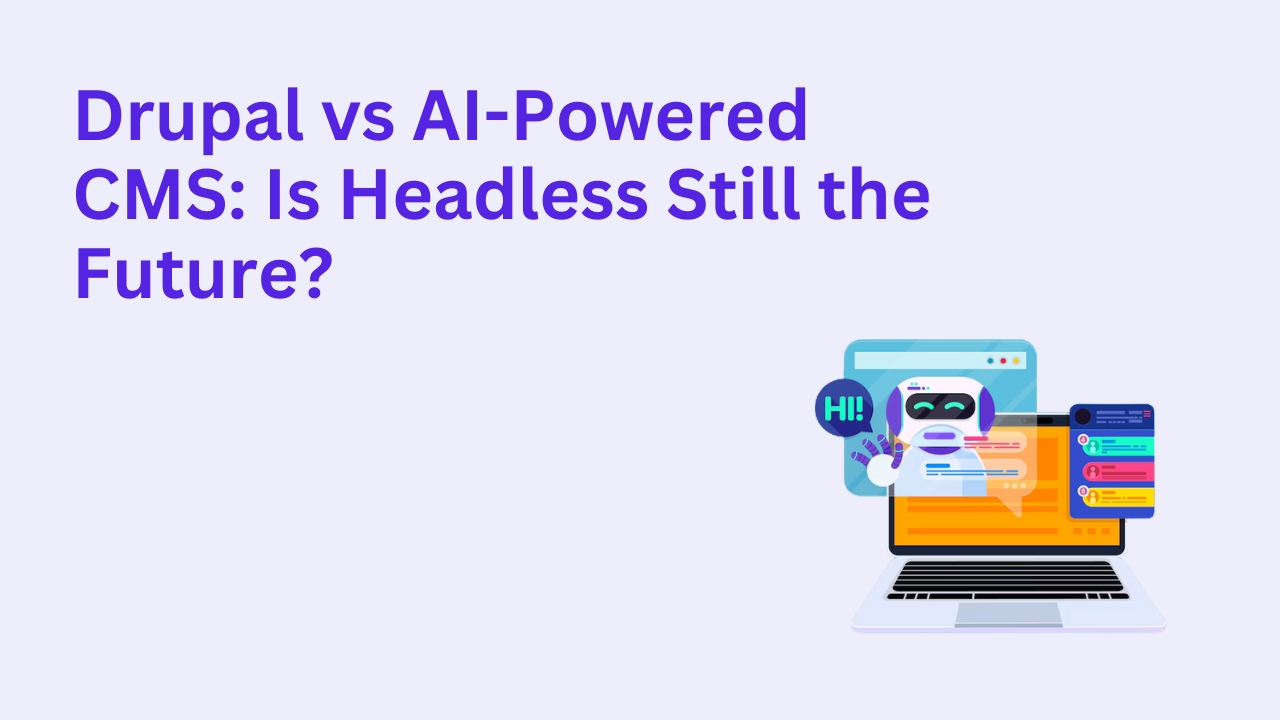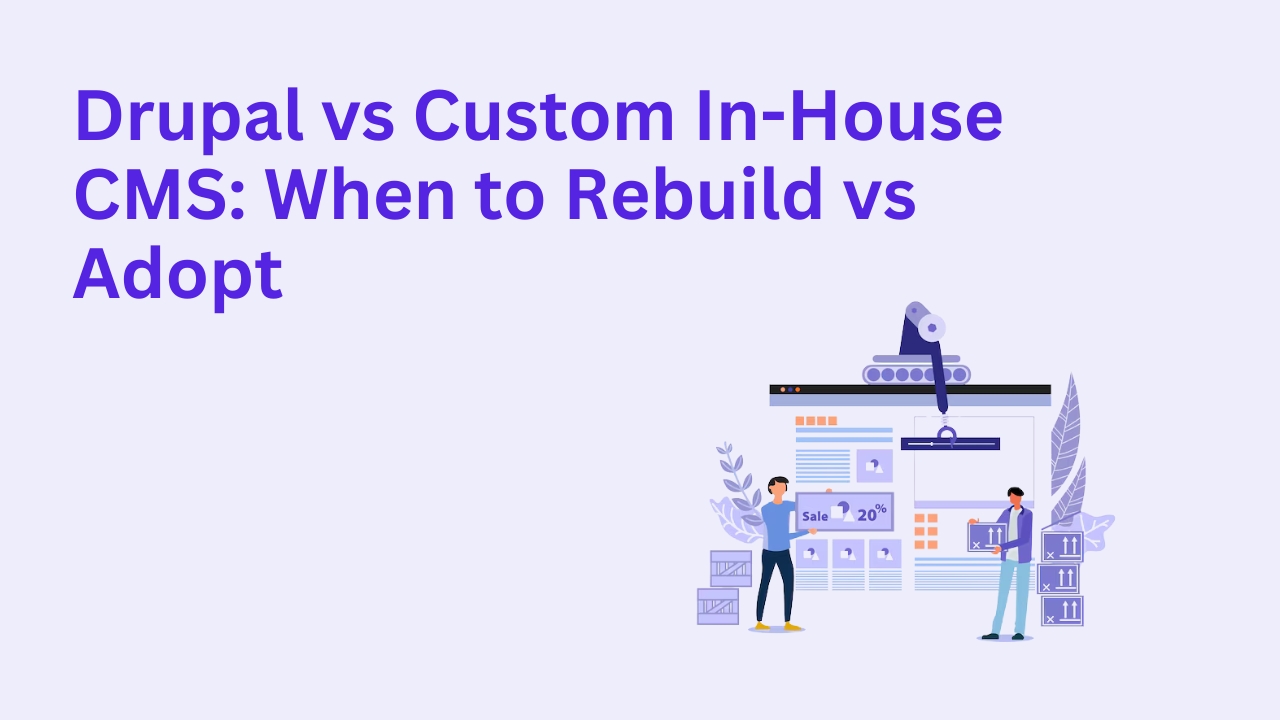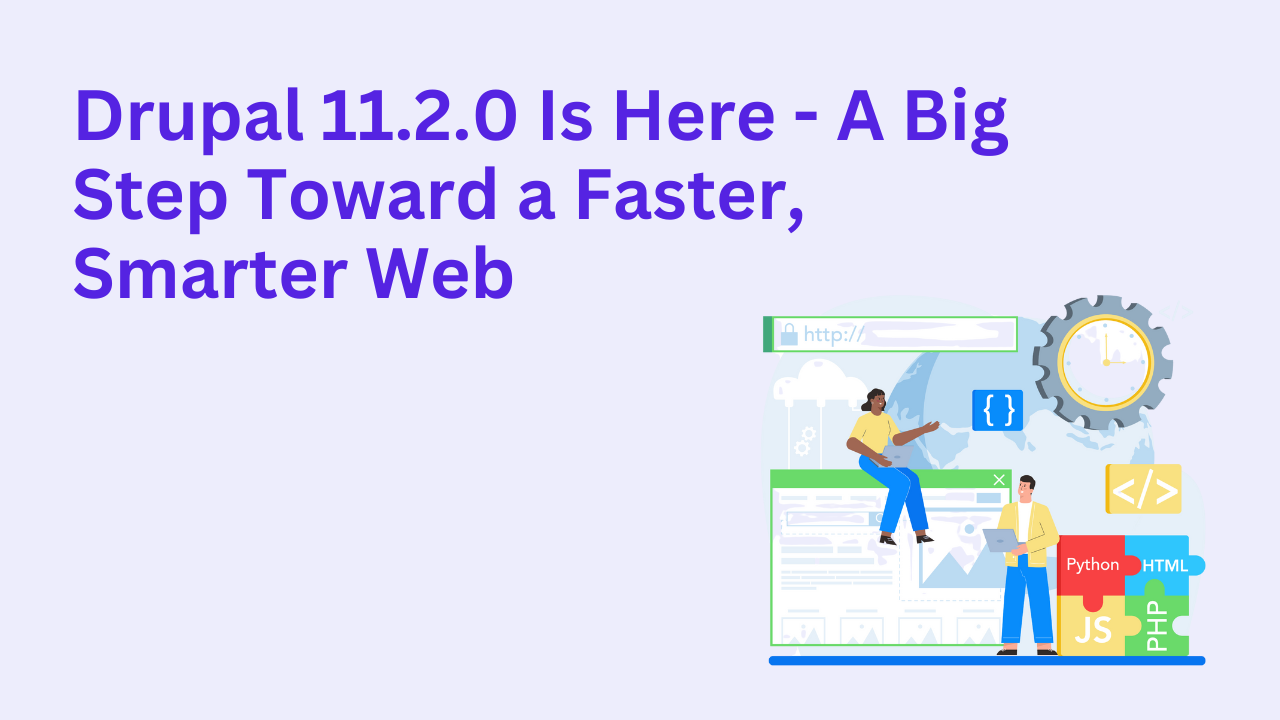Drupal in 2025 vs Low-Code Platforms: What Will Scale Better?

As businesses gear up for 2025, the choice between Drupal and low-code platforms is more critical than ever. Will open-source customization continue to rule, or will low-code solutions win with their rapid deployment and ease of use?
In this blog, we’ll dive into:
How Drupal has evolved for 2025
The promise (and pitfalls) of low-code platforms
What scales better for businesses looking to grow
Drupal in 2025: Evolved and Future-Ready
Drupal has always been known for its flexibility and power. By 2025, it’s even stronger:
Drupal 10 and beyond: Better editorial UX, modern front-end frameworks, and robust APIs.
API-first and headless: Seamless content delivery to any channel or device.
Open-source community: Security updates, performance optimizations, and modules for any need.
Advanced multilingual and accessibility features to reach a global audience.
Drupal’s evolution means enterprise-grade stability combined with modern developer agility.
Low-Code Platforms: The Fast Track to Digital?
Low-code platforms (like OutSystems, Mendix, Appian) promise:
Drag-and-drop interfaces
Pre-built integrations
Shorter development cycles
Non-technical teams can deploy apps faster
They’re ideal for:
Internal tools
Proof-of-concept projects
Businesses without dedicated development teams
But… are they built to scale?
Pros and Cons: Drupal vs Low-Code Platforms
Drupal in 2025
Full control over your data and user experience
Extreme customization and integration capabilities
Open-source—no vendor lock-in
Large ecosystem for modules and security
Steeper learning curve
Requires skilled developers or a reliable agency
Low-Code Platforms
Lightning-fast to launch simple apps
Intuitive interfaces—less coding knowledge required
Often comes with built-in security, hosting, and analytics
Licensing fees can be steep
Vendor lock-in limits long-term flexibility
Scaling to complex use cases can be tough
Less control over the underlying infrastructure
Which One Scales Better?
For Complex, Long-Term Growth
Drupal wins.
It adapts to your evolving needs.
You can integrate AI, headless, custom workflows.
You’re not stuck paying for features you don’t use.
You fully own your code and data.
For Quick Prototyping and Internal Apps
Low-code is great if your use case is straightforward and doesn’t require heavy customization.
Final Verdict
In 2025 and beyond, Drupal remains the better choice for businesses that need:
Robust security and compliance
Unlimited flexibility for integrations
Future-proof scalability across multiple sites and channels
Low-code platforms are great for short-term wins, but Drupal is built for long-term growth.
Ready to Scale with Drupal in 2025?
At Drupalify, we help businesses leverage Drupal’s future-ready capabilities—whether it’s integrating AI, going headless, or managing complex digital ecosystems.
👉 Hire Drupal Developers for Scalable Projects
📅 Book a Free Consultation








